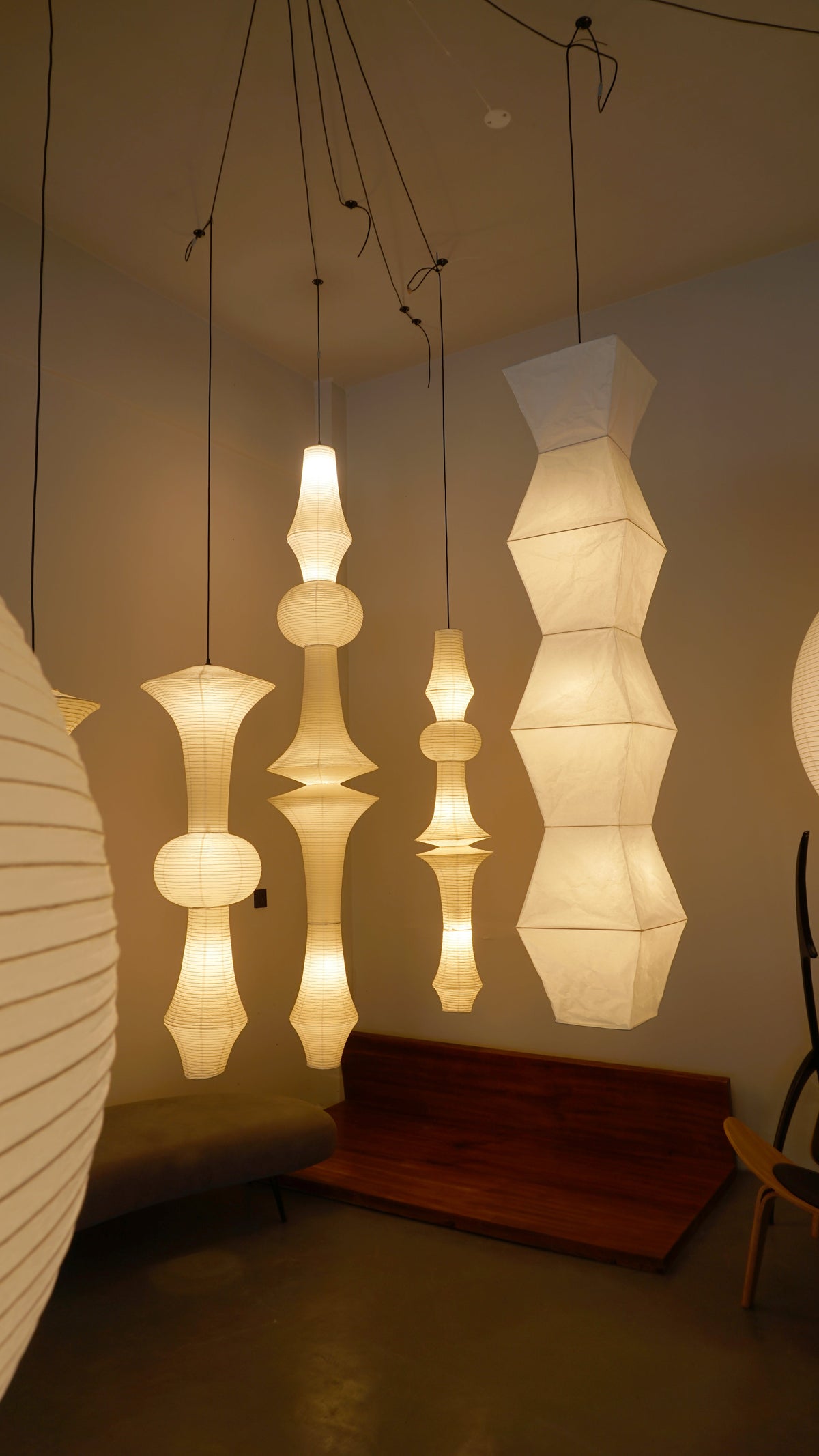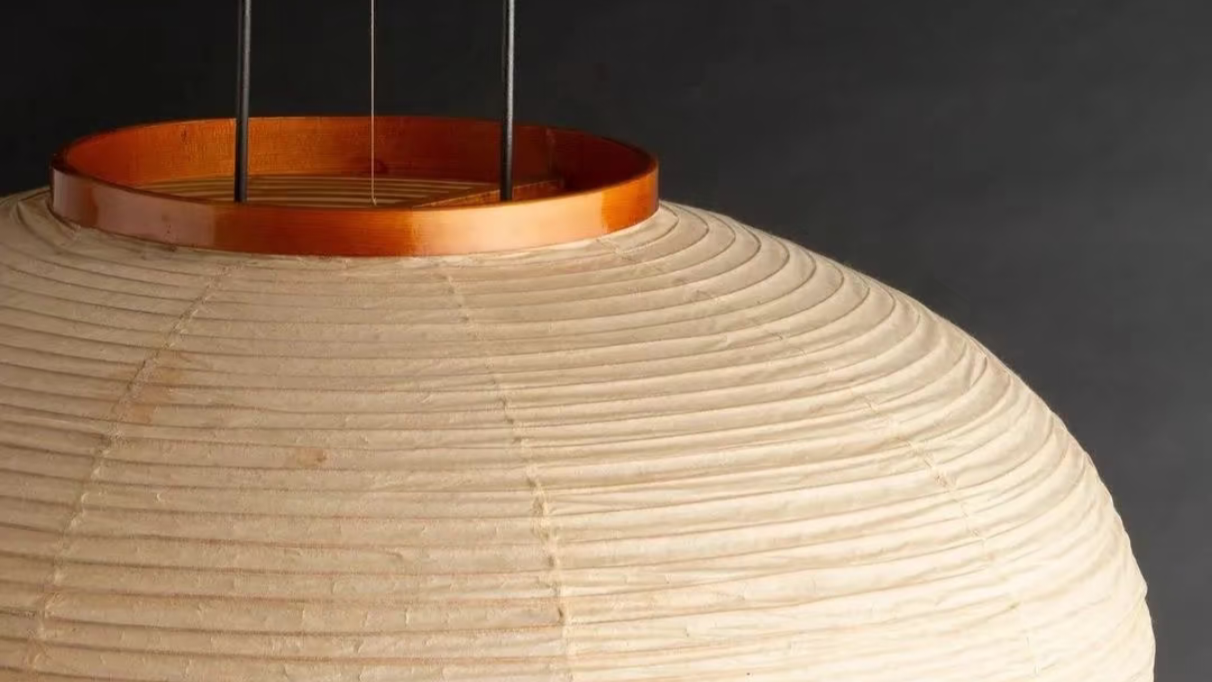Summary: Akari lamps – Japanese-designed paper lanterns by Isamu Noguchi – offer a soft, friendly light at an affordable price. We compare these rice-paper pendants to crystal chandeliers. Akari fixtures (like the 55A pendant or Akari floor lamps) are lightweight, energy-saving, and create a cozy atmosphere, whereas chandeliers are heavier, brighter, and more formal. Learn why Akari may be the better choice for everyday home lighting.

Traditional chandeliers often feel like special-occasion lighting – they’re eye-catching but formal. In contrast, an Akari paper lamp is all about subtle warmth. Made of handmade washi paper and thin bamboo ribbing, the Akari (meaning “light” in Japanese) was designed to turn on with the atmosphere. Modefinity highlights that the Akari 55A “provides a soft, warm glow for a cozy ambiance” with a simple spherical rice-paper shade. In other words, Akari lamps emit gentle, diffused light that invites relaxation.
Chandeliers, by comparison, usually have many exposed bulbs shining through glass or crystal. This makes them brighter and more dazzling, but also harsher. If you use a chandelier in a living space, the overhead light might feel intense and decorative. Akari pendants, however, create a relaxed mood. Guests will notice the warm light before they notice the lamp itself.
Energy use is another practical factor. Since a chandelier uses multiple bulbs, it draws more power. An Akari pendant with a single LED bulb can light a room with minimal electricity. Over time, this means lower energy bills. In fact, Lowe’s notes that pendant lights are “energy efficient because they need few bulbs to brighten the room”, whereas chandeliers consume more (unless all bulbs are LEDs).
Cost is also on the Akari’s side. A large crystal chandelier can cost thousands, especially from luxury brands. Akari lamps are relatively affordable. For example, Vidirlighting lists an Akari 55A pendant at ~$145 (marked down from $247). Sales and promotions on Akari lights happen often – so you may find an Akari lamp sale at a great price. By contrast, discounted chandeliers are rare, and even a “budget” chandelier might cost as much as a premium Akari.
Maintenance-wise, paper vs crystal matters. Cleaning a chandelier requires dusting every crystal droplet. An Akari lamp just needs a gentle dusting of the smooth paper surface occasionally. This makes Akari much more user-friendly for daily life.
Finally, let’s not forget variety. The Akari line isn’t limited to pendants. There are Akari paper floor lamps and tabletop lamps as well. For instance, an Akari-style floor lamp (like a 50A standing lantern) can be placed in a corner to cast soft upward light. These floor models retain the same rice-paper charm but free you from ceiling wiring. A chandelier has no floor version (it’s always overhead), so it can’t offer that flexible, ground-level accent lighting.
In summary, if you want warm, easygoing light in your home, Akari lamps win hands-down. They blend art and illumination: as one fan put it, Akari is “not just a lamp – it’s art”. They sit well in living rooms, bedrooms, or any cozy corner. Chandeliers, on the other hand, are perfect for making a grand statement – great if you love opulence. But for everyday comfort and style, many homeowners prefer the Akari’s modern simplicity.





0 comments